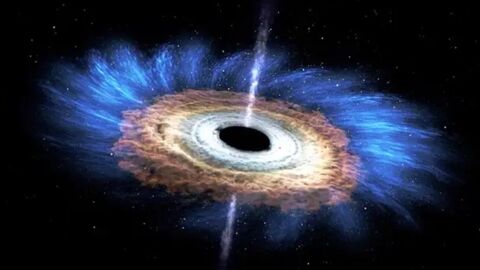A year ago almost to the day, the Event Horizon Telescope (EHT) succeeded in capturing the first photo of Sagittarius A*, the black hole at the centre of our galaxy. But it seems astronomers on the EHT project weren’t willing to stop there.
Discover our latest podcast
Five billion light-years away
For the first time ever, scientists have managed to take a highly-detailed and incredibly precise photo of plasma jets being ejected from a supermassive black hole.
This achievement is even more impressive and exceptional when you consider the fact that this black hole is part of a quasar called 3C 279 which lies in the Virgo constellation almost five billion light-years away from Earth.

According to specialists on the project, the bright blob on the left of the image is thought to be a disc of gas and dust swirling around the black hole. The jets of plasma in question are depicted by a stream of less intense red features apparently emanating from it.
A revolutionary method
According to The Guardian, experts explained that these jets were part of a structure known as a ‘blazar' which are formed from quasars which create magnetic fields as they spin, resulting in material from around the black hole being shot out in two jets, one of which points towards the Earth.
To get such a precise photo of a celestial body that is located so far away, the EHT used the Very Long Baseline Interferometry method (VLBI) which combines readings taken from several satellites and radio dishes around the world to reach a common result.
In a press release published by the team working on the EHT project, researchers explained that these results are the ‘equivalent of someone on Earth identifying an orange on the moon’.
Despite plans being aborted due to the current health crisis that is shaking the world, Michael Hecht, an astronomer at MIT / Haystack Observatory and the EHT Deputy Project Director, concluded that:
We will now devote our full concentration to completion of scientific publications from the 2017 data and dive into the analysis of data obtained with the enhanced EHT array in 2018. We are looking forward to observations with the EHT array expanded to eleven observatories in the spring of 2021.















